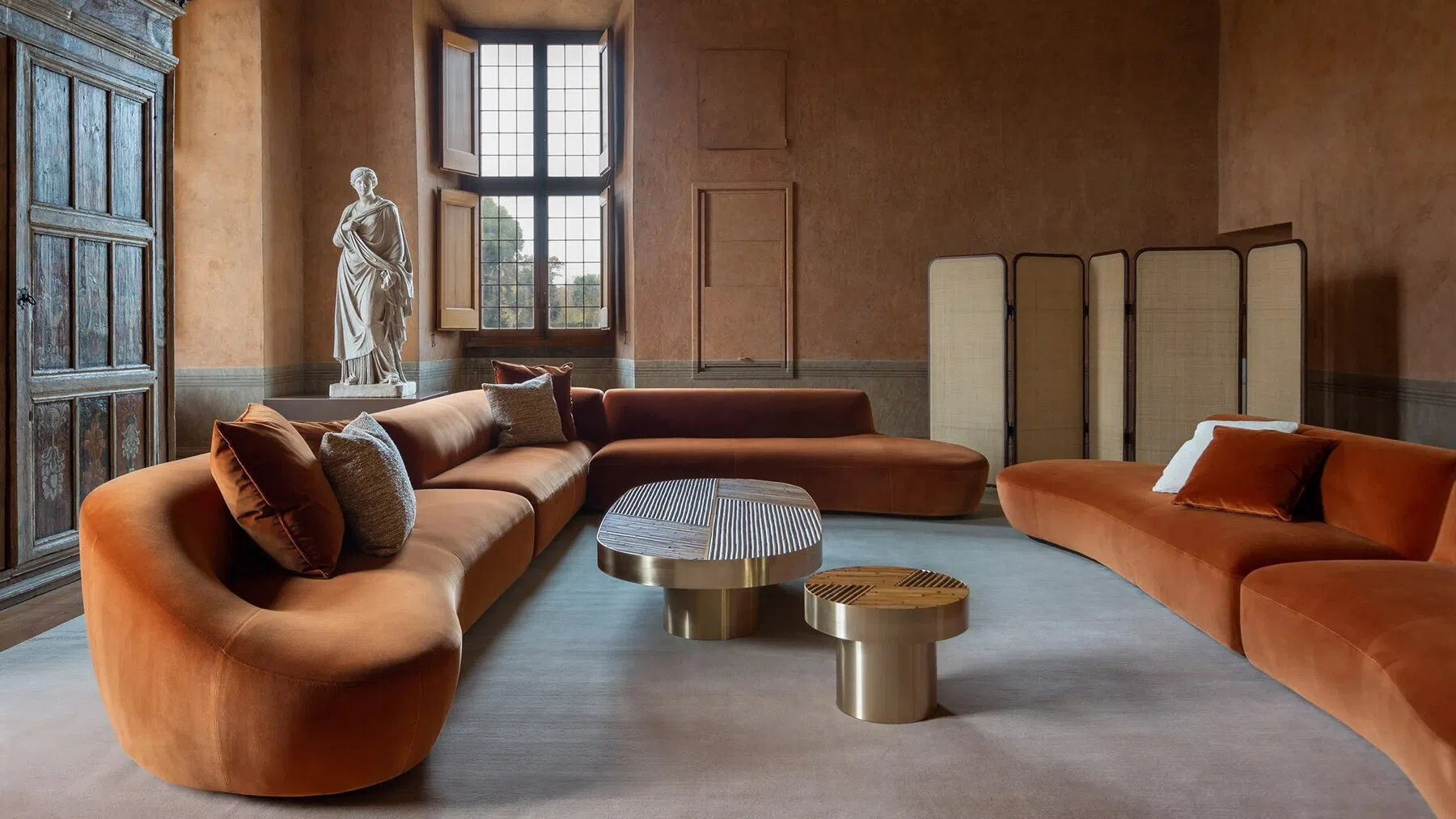
Every Fendi space is more than an interior; it is a symphony of Italian heritage, modern artistry, and timeless luxury. Each setting, from living room to bedroom and dining room, expresses the unmistakable spirit of Fendi: an elegant dialogue between fashion and design, tradition and innovation.
Fendi was among the first to translate the language of haute couture into the world of interiors. What began as a daring experiment has become an international benchmark for sophisticated living.
In the living room, Fendi creates a universe of refined warmth and balance. Sofas envelop the body with soft leather, velvet, or nubuck, their silhouettes accentuated by precise tailoring and artisanal stitching. Tables, lamps, and accessories echo the brand's architectural sensibility, forming spaces that feel both curated and effortless.
The bedroom is the intimate side of Fendi — a haven of calm sophistication. Delicate textures, neutral tones, and sculptural headboards evoke a sense of serenity here. Each element is designed not just to furnish but to elevate the ritual of rest.
The dining room is a place where craftsmanship and conviviality blend. The polished marble, glossy lacquer, and metallic accents frame elegant tables with sculpted chairs, setting the scene for feasts that celebrate beauty in every detail.
Each Fendi room embodies the brand's philosophy: it is in the details, proportions, and emotions that true luxury can be truly celebrated. With every collection, the brand redefines modern living at home, transforming interiors into art forms that reflect history, craftsmanship, and the ever-changing rhythm of contemporary life.
Discover the world of refined elegance with Fendi, where the high-fashion DNA is meticulously translated into furniture. Each piece is a tribute to the Italian art of living, blending sartorial heritage, architectural precision, and tactile luxury into interiors that feel as exclusive as a bespoke wardrobe.
Equally important is the modular and architectural design language: sofas, armchairs, and sideboards follow clean, expansive geometries, yet are softened by tactile upholstery and subtle decorative motifs.
Take, for example, the Cover sofa — a modular seating system that allows limitless configurations while remaining unmistakably Fendi in aesthetic. Or the F-Stripes sofa, designed by Ludovica Serafini and Roberto Palomba, which reinterprets the brand’s quiet luxury with understated stripes and elegant proportions.
The overall aesthetic of Fendi furniture is one of balance: grandeur paired with subtlety, structural purity softened by artisanal details, and heritage codes reimagined for the home. Whether you choose a reclining chaise-lounge upholstered in bouclé, a sculptural low table in marble, or a dresser finished in sand-blasted glass and metal accents, the message is the same: timeless luxury, made for living.